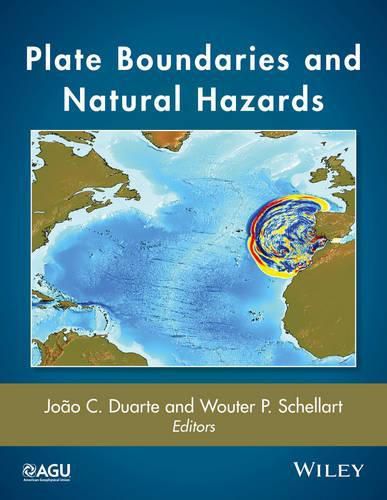Readings Newsletter
Become a Readings Member to make your shopping experience even easier.
Sign in or sign up for free!
You’re not far away from qualifying for FREE standard shipping within Australia
You’ve qualified for FREE standard shipping within Australia
The cart is loading…






The beginning of the new millennium has been particularly devastating in terms of natural disasters associated with tectonic plate boundaries, such as earthquakes in Sumatra, Chile, Japan, Tahiti, and Nepal; the Indian Ocean and the Pacific Ocean tsunamis; and volcanoes in Indonesia, Chile, Iceland that have produced large quantities of ash causing major disruption to aviation. In total, half a million people were killed by such natural disasters. These recurring events have increased our awareness of the destructive power of natural hazards and the major risks associated with them. While we have come a long way in the search for understanding such natural phenomena, and although our knowledge of Earth dynamics and plate tectonics has improved enormously, there are still fundamental uncertainties in our understanding of natural hazards. Increased understanding is crucial to improve our capacity for hazard prediction and mitigation.
Volume highlights include:
Main concepts associated with tectonic plate boundaries Novel studies on boundary-related natural hazards Fundamental concepts that improve hazard prediction and mitigation
Plate Boundaries and Natural Hazards will be a valuable resource for scientists and students in the fields of geophysics, geochemistry, plate tectonics, natural hazards, and climate science.
Read an interview with the editors to find out more: https://eos.org/editors-vox/plate-boundaries-and-natural-hazards
$9.00 standard shipping within Australia
FREE standard shipping within Australia for orders over $100.00
Express & International shipping calculated at checkout
The beginning of the new millennium has been particularly devastating in terms of natural disasters associated with tectonic plate boundaries, such as earthquakes in Sumatra, Chile, Japan, Tahiti, and Nepal; the Indian Ocean and the Pacific Ocean tsunamis; and volcanoes in Indonesia, Chile, Iceland that have produced large quantities of ash causing major disruption to aviation. In total, half a million people were killed by such natural disasters. These recurring events have increased our awareness of the destructive power of natural hazards and the major risks associated with them. While we have come a long way in the search for understanding such natural phenomena, and although our knowledge of Earth dynamics and plate tectonics has improved enormously, there are still fundamental uncertainties in our understanding of natural hazards. Increased understanding is crucial to improve our capacity for hazard prediction and mitigation.
Volume highlights include:
Main concepts associated with tectonic plate boundaries Novel studies on boundary-related natural hazards Fundamental concepts that improve hazard prediction and mitigation
Plate Boundaries and Natural Hazards will be a valuable resource for scientists and students in the fields of geophysics, geochemistry, plate tectonics, natural hazards, and climate science.
Read an interview with the editors to find out more: https://eos.org/editors-vox/plate-boundaries-and-natural-hazards